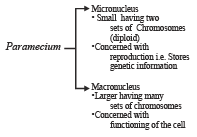Test: Biological Classification 7 - From Past 28 Years Questions - NEET MCQ
25 Questions MCQ Test - Test: Biological Classification 7 - From Past 28 Years Questions
The causal organism for African sleeping sickness is [1989]
The vector for sleeping sickness is [1989]
| 1 Crore+ students have signed up on EduRev. Have you? Download the App |
Trypanosoma belongs to class [1989]
Malaria fever coincides with liberation of
A bite of Tse-Tse fly may pass to humans
The infective stage of malarial parasite Plasmodium that enters human body is [1989]
Lichens indicate SO2 pollution because they [1989]
Which one belongs to monera? [1990]
The main difference in Gram (+)ve and Gram (–)ve bacteria resides in their [1990, 2001]
Genetic information in Paramecium is contained in [1990]
Which is true about Trypanosoma ? [1990]
Amoebiasis is prevented by [1990]
Plasmodium, the malarial parasite, belongs to class[1990]
A nonphotosynthetic aerobic nitrogen fixing soil bacterium is [1990, 1994]
Absorptive heterotrophic nutrition is exhibited by [1990]
Who discovered Plasmodium in R.B.C of human beings ? [1991]
Malignant tertian malarial parasite is [1991]
Name the organisms which do not derive energy directly or indirectly from sun [1991]
African sleeping sickness is due to [1991]
In Amoeba and Paramecium osmoregulation occurs through [1991, 2002]
Bacteria lack alternation of generation because there is [1991, 1992]
The part of life cycle of malarial parasite Plasmodium vivax, that is passed in female Anopheles is [1992]
Organisms which are indicator of SO2 pollution of air [1992]
Escherichia coli is used extensively in biological research as it is [1993]
Genophore/bacterial genome or nucleoid is made of [1993]



















